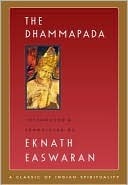More on this book
Community
Kindle Notes & Highlights
emptiness of process means fullness of being. Nirvana is aroga, freedom from all illness; shiva, happiness; kshema, security; abhaya, the absence of fear; shanta, peace of mind; anashrava, freedom from compulsions; ajara, untouched by age; amata, ...
This highlight has been truncated due to consecutive passage length restrictions.
Buddhist scriptures are divided into three pitakas or “baskets.”
Sutra Pitaka
The Dhammapada,
Vinaya Pitaka or “basket of discipline,”
Abhidharma Pitaka or “basket of m...
This highlight has been truncated due to consecutive passage length restrictions.
The mind, he suggests, has a depth far greater than the deepest sea, and
this kind of training, Mahatma Gandhi once said, requires the patience of someone trying to empty the sea with a teacup.
No conqueror, not even Napoleon or Alexander, ever fought a battle more significant than that waged for control over one’s own mind. To win, the Buddha says in a later verse (103), is a greater feat than conquering a thousand times a thousand men on the battlefield.
The inertial drift of millions of such minds, not evil but simply uncontrolled, can take the world to a precipice.
As a flood sweeps away a slumbering village, death sweeps away those who spend their lives gathering flowers. 48
Death sweeps them away while they are still gathering, caught in the pursuit of pleasure. 49 But the wise live without injuring nature, as the bee drinks nectar without harming the flower.
there are two kinds of immature people: those who do not see their own mistakes as mistakes, and those who do not forgive mistakes committed by someone else.
the “seven fields of enlightenment”: mindfulness, vigor, joy, serenity, concentration, equanimity, and “penetration of dharma” – that is, seeing the workings of dharma everywhere, even in the events of everyday life.
Bodhi is not nirvana. It is a temporary stilling of the mind, which brings illumination of consciousness; nirvana, the permanent release from all sources of suffering, is attained only when the experience of enlightenment has been repeated so often that
An arhant is that person who, having developed the fullness of humanity by attaining nirvana, now truly deserves to be called a human being.
The arhant has won permanent release from samsara, while the bodhisattva chooses to return to it until the very end of time.
One who conquers himself is greater than another who conquers a thousand times a thousand men on the battlefield.
self-fulfilling law of karma,
karma states that as we sow, so shall we reap: everything we do, say, or even think has consequences, good or bad, and sooner or later those consequences must come back to us.
for an action to produce karma, it has to be accompanied by a conscious will,
the will is an accomplice, and the action will bear fruit (136).
samskaras, or karma-formed states.
A samskara involves not just one action and its karmic return, but a mental inclination to act in a certain way.
samskara: a habit of thinking which karmically locks us into patterns of behavior over which we have less and less control with every succeeding repetition.
If we do not try to shape our lives, the conditioning of our samskaras will shape them for us,
the human being is anatman, “without a self,”
When the wanderer Vacchagotta came asking about the existence of the Self, for example, the Buddha would not even give him an answer. This occasion, called the Buddha’s Noble Silence, contains his real answer to all metaphysical speculation.
the Buddha maintained no intellectual positions whatever.
By offering no metaphysical supports, the Buddha prompts us to plunge deep in meditation and see for ourselves what we discover.
different levels of reality: samvriti-satya, “conventional reality” or the world of day-to-day life, and
paramartha-satya, “absolute reality.”
beneath this conventional level is a permanent ground of being: paramartha, which is completely unaffected by change.
infinite compassion, unqualified good will for all creatures in all circumstances.
the only question asked is how fully one has used life’s precious opportunities for spiritual growth.
making the hard, unnatural effort to put others’ welfare and safety before his own, in life after life, placing himself for an even greater leap next time.
Buddhist concept of Trikaya, literally “three bodies,”
First is nirmanakaya, that human form the Buddha-principle took on to answer the needs of a suffering world. The
Gospel of John says, “And the Word became flesh and dwelt among us, full of grace and truth.” The same principle is described in the Bhagavad Gita (4:7–8), where Lord Krishna says, “Whenever dharma declines and the purpose of life is forgotten, I manifest myself. I am born in age after age to protect the good, to destroy evil, and to reestablish dharma.”
second form: the sambhogakaya, literally the “body of intense joy,” a glorified manifestation
like St. Teresa’s visions of her Jesus, can be experientially revealed to those who earnestly practice his teachings. It is this “body of bliss” that the faithful pray to and attempt to represent in painting and sculpture. “Bliss” refers to the experience,
Third and most abstract of the Buddha’s forms is the dharmakaya, the “body of dharma.”
Mahatma Gandhi said once that we can talk about a supreme reality either as the Lawgiver (dharmakarta) or as the Law (dharma).
Do not find fault with others,
To try to hold on to anything – a thing, a person, an event, a position – merely exposes us to its loss.
joy was an internal state, with no necessary connection with external conditions.
duhkha from duh, a prefix meaning something wrong or evil, and kha, empty space. Ordinary experience is a void that cannot be filled by anything; it is nothing but change.
There is no fire like lust, no sickness like hatred, no sorrow like separateness, no joy like peace.
203No disease is worse than greed, no suffering worse than selfish passion.
Health is the best gift, contentment


